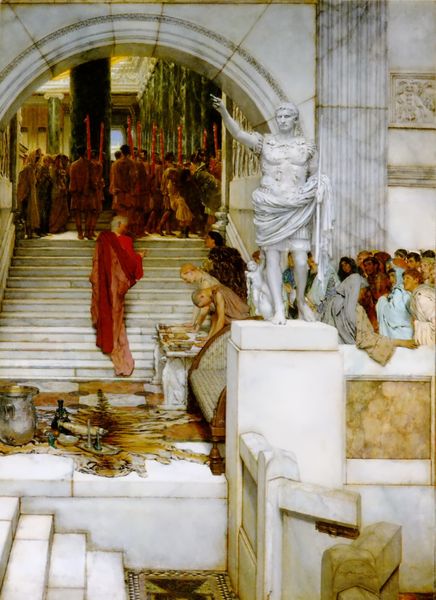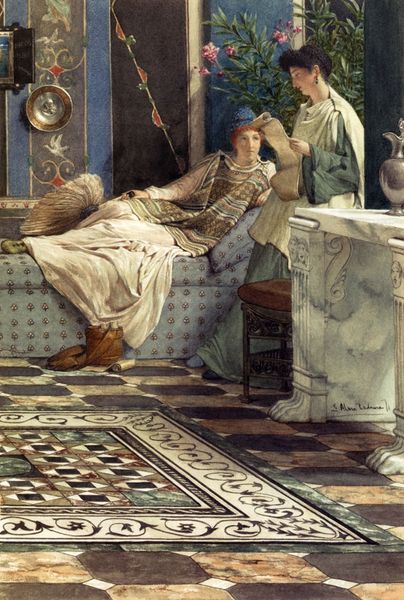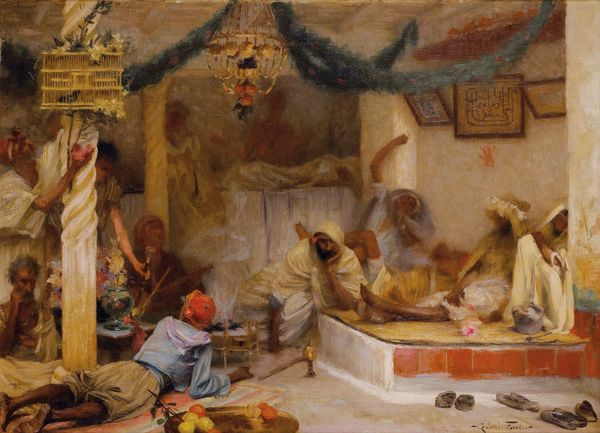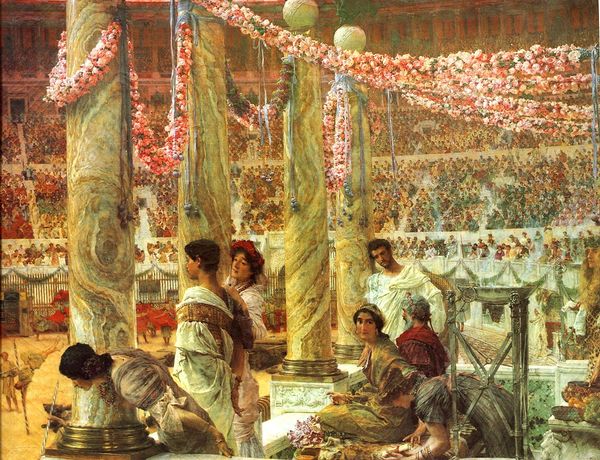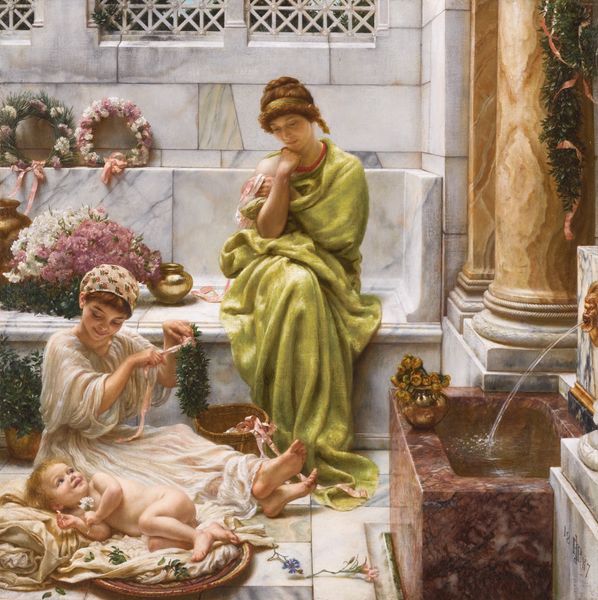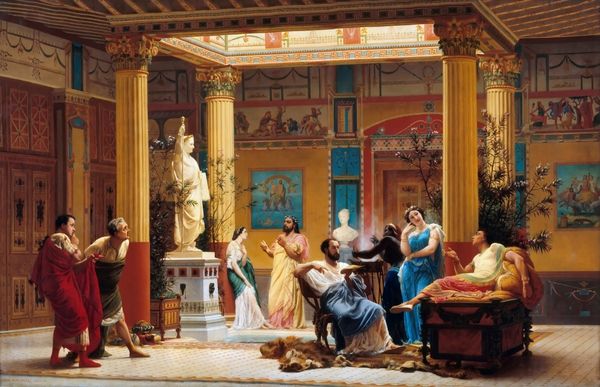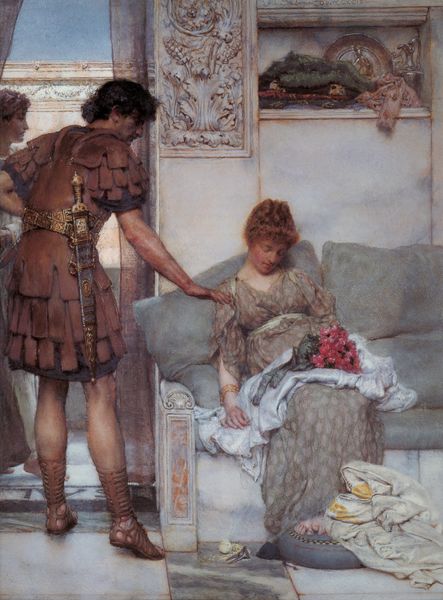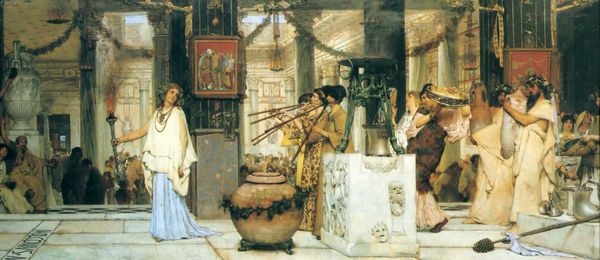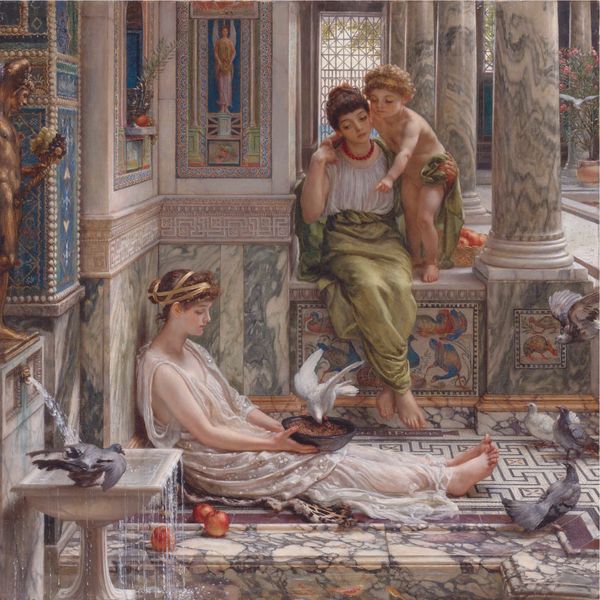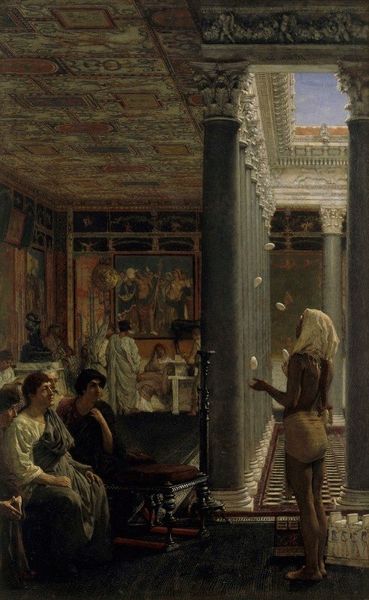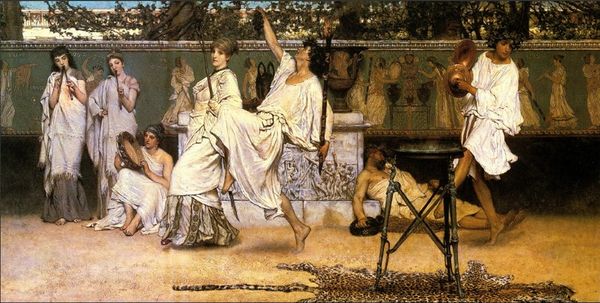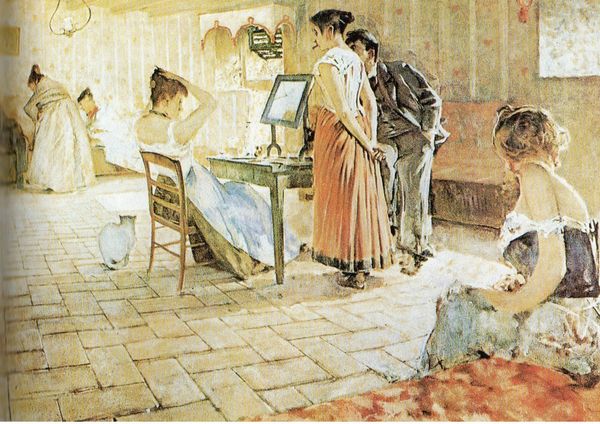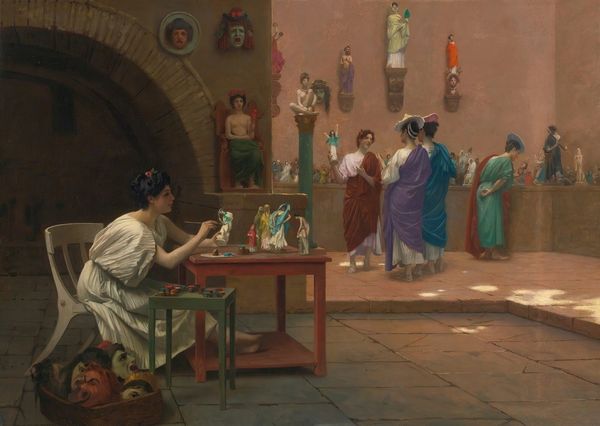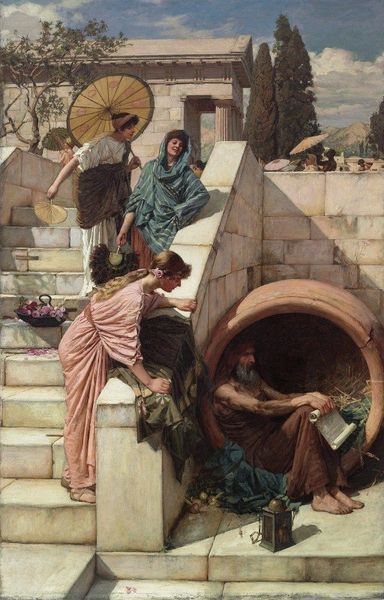
The Sculpture Gallery 1874
0:00
0:00
lawrencealmatadema
Hood Museum of Art (Dartmouth College), Hanover, NH, US
Dimensions: 173.5 x 223.4 cm
Copyright: Public domain
Curator: Look at this marvelous oil on canvas by Lawrence Alma-Tadema, dating back to 1874. It's called "The Sculpture Gallery." Editor: Immediately, I'm struck by the light. The way it dapples the marble, highlighting the texture and form. The composition has an incredible balance, despite the bustling scene. Curator: It's a fascinating representation of the commodification of art within specific historical contexts. Alma-Tadema situates the white marble sculptures and their mostly white, wealthy patrons within the lingering imperial narrative, inviting dialogue on cultural power and privilege. Editor: While acknowledging those valid sociopolitical readings, I see first a sophisticated study of geometric relationships: the cylinder of the fountain's base against the rectangles of the surrounding architecture. The play of curves and angles, light and shadow is undeniably captivating. Curator: But how can we ignore the absence? Notice who isn't in the painting: enslaved peoples whose labor and exploitation enabled such opulent leisure and consumption of art. By excluding this crucial context, Alma-Tadema normalizes inequity, obscuring the systemic violence underwriting the "civilized" world he portrays. Editor: True, the lack of any acknowledgement to the exploited workforce may seem a tacit approval from the painter's point of view. Yet the intricate patterns and layering of spatial planes direct me away from sociopolitical angles, toward the study of shape and form. Look at the chromatic scheme, for example: so restricted, it enhances the optical impact of form versus form, from foreground to distant, illuminated planes. Curator: His commitment to accurately rendering classical life does not negate his blindness towards marginalized communities then and his contemporary implication through what he is, consciously or not, emphasizing in his scene. The seemingly innocent painting aestheticizes an order built on violence. Editor: Perhaps we simply appreciate his technical mastery. Isn't it enough that the formal relationships alone allow an entry point into discussing structure, representation, and painterly conventions? Curator: Precisely! Formal analysis is a stepping stone to unpacking how such constructions of beauty are historically and culturally contingent and often uphold power structures. We should be inviting that exploration. Editor: Then it appears we are in complete agreement: we merely value separate, but ultimately interlocking, tools in approaching historical material.
Comments
No comments
Be the first to comment and join the conversation on the ultimate creative platform.
